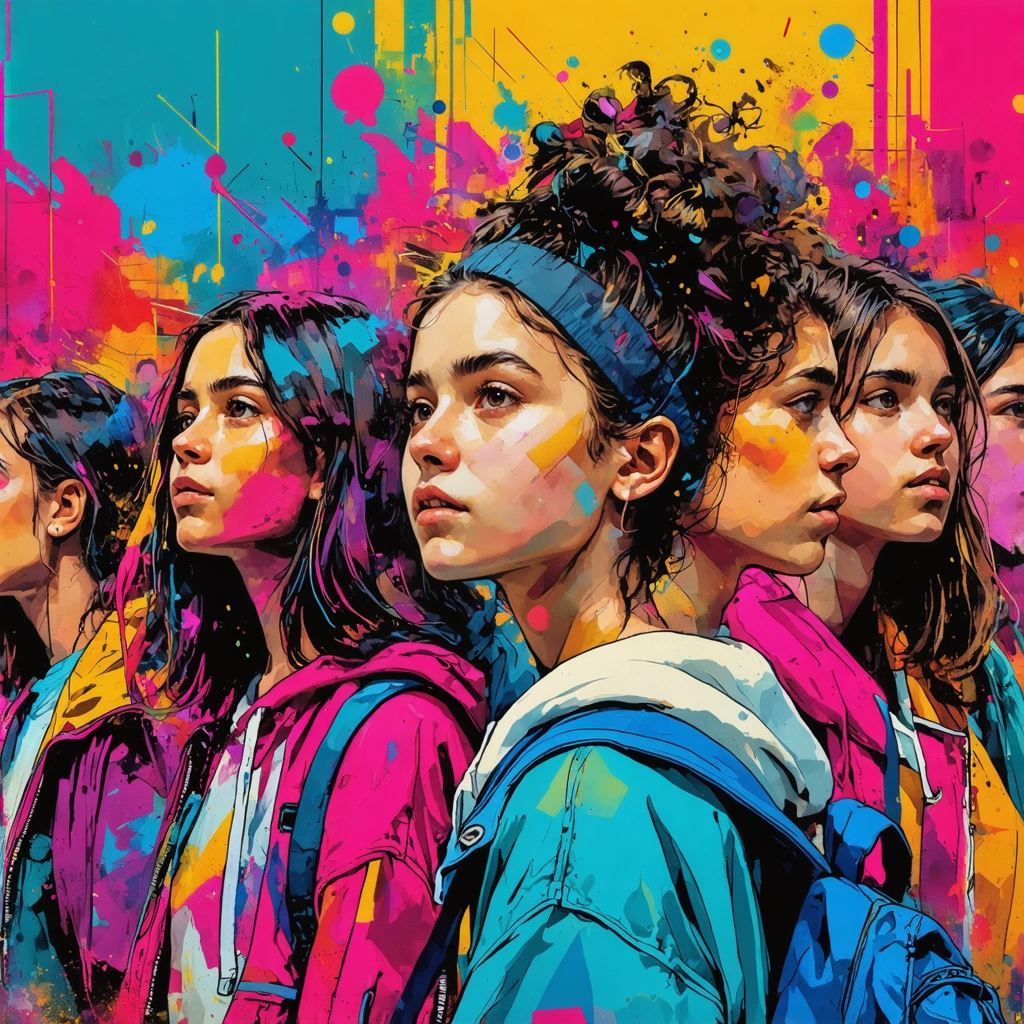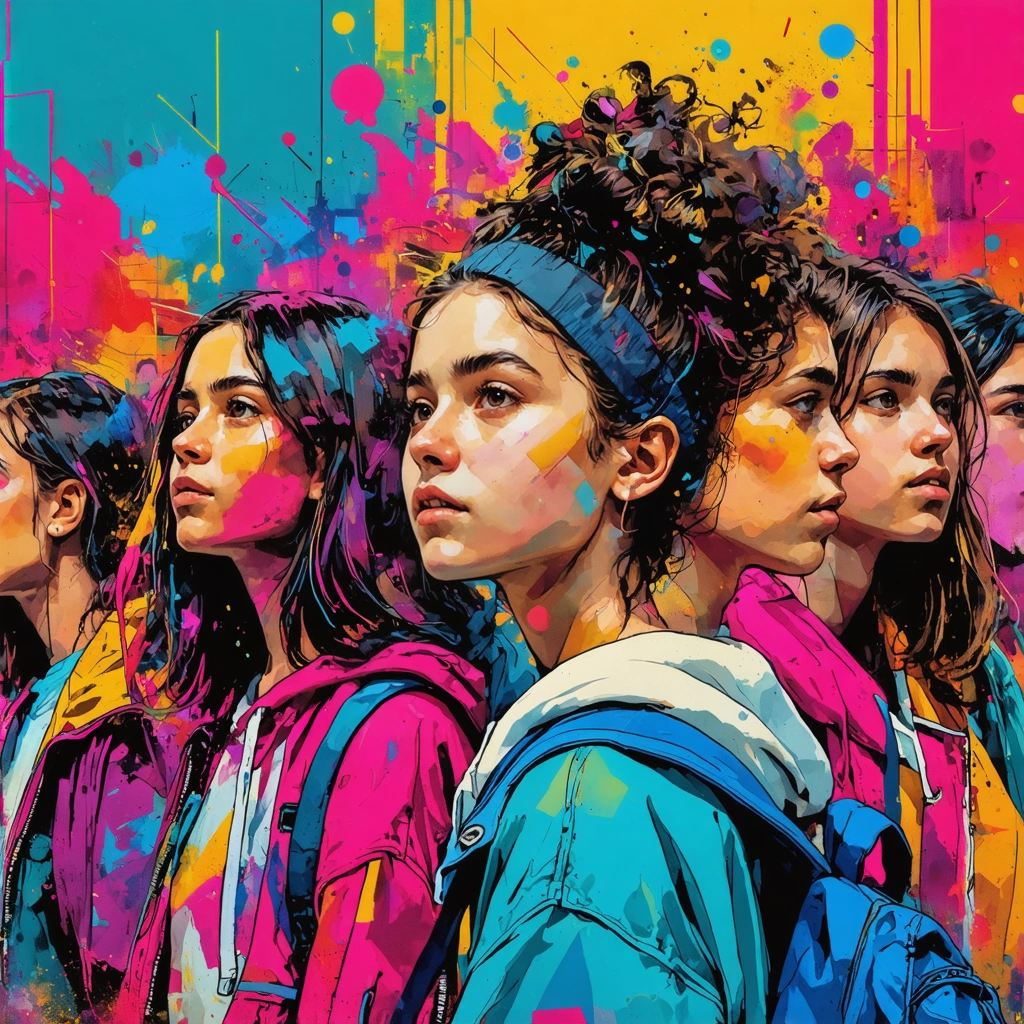
Why Teen Drama Often Misses the Mark (And What Heartbreak High Does Differently)
We’ve all been there—the awkward first day of high school, the tangled mess of friendships and crushes, the overwhelming pressure of figuring out who we are in a world that seems to expect so much. Yet, when it comes to teen dramas, many shows tend to gloss over these raw, complicated moments, opting for glossy clichés and superficial storylines. But what if there was a series that dared to dig deeper, peeling back the shiny veneer to expose the real, unfiltered experience of adolescence?
Enter Heartbreak High, an Australian series that has redefined what teen drama can be. It doesn’t just show teenagers navigating school halls; it throws the spotlight on the gritty realities they face—identity crises, mental health struggles, social injustice, and the messy, beautiful chaos of growing up. Unlike many of its counterparts, this show refuses to shy away from uncomfortable truths. It’s the kind of storytelling that hits you where it hurts, in all the best ways.
Heartbreak High’s Bold Approach: Why It Resonates with Today’s Youth
So, why does Heartbreak High feel so refreshing in a crowded genre? It boils down to authenticity. Teen dramas can sometimes feel like a caricature of youth, with characters that are more stereotype than flesh and blood. But this Australian series flips that script. The characters in Heartbreak High aren’t just roles to fill; they’re complex, flawed, and deeply human individuals whose stories mirror the real struggles young people face every day.
From tackling topics like racism, LGBTQ+ identity, and class disparity to exploring mental health with sensitivity and nuance, the show creates a space where young viewers can see themselves reflected honestly. It’s a bold storytelling choice that invites empathy rather than judgment. And that’s exactly what many teen dramas miss—a genuine connection that feels less like entertainment and more like a shared experience.
Moreover, the narrative style of Heartbreak High is unapologetically raw. It doesn’t sugarcoat the pain, the confusion, or the mistakes. Instead, it leans into them, offering a portrayal of youth that’s as messy and unpredictable as real life. This approach not only validates the feelings of its audience but also encourages important conversations about issues that often remain taboo in mainstream media.
What This Means for Teen Drama Fans and Beyond
If you’ve ever found yourself frustrated by the lack of depth in teen dramas or wished for a show that truly speaks to the modern adolescent experience, Heartbreak High delivers. It’s more than just entertainment; it’s a cultural touchstone that challenges outdated narratives and opens doors to understanding the layered realities of young people today.
In the sections that follow, we’ll explore how Heartbreak High uses its Australian roots to bring a fresh perspective to teen drama, why its storytelling is so effective in capturing youth struggles, and what lessons both creators and viewers can take away from this groundbreaking series. Whether you’re a longtime fan or new to the show, there’s plenty to unpack and appreciate in the way Heartbreak High reshapes the teen drama landscape.

What is Heartbreak High and why is it considered a standout teen drama?
Heartbreak High is an Australian series that has garnered acclaim for its authentic and unflinching portrayal of teenage life. Unlike many traditional teen dramas that often sanitize or romanticize adolescent struggles, Heartbreak High dives deeply into the complex realities faced by young people. The show’s bold storytelling approach captures themes such as identity, mental health, relationships, social justice, and cultural diversity, making it resonate strongly with audiences around the world.
What sets this teen drama apart is its commitment to realism and inclusivity. It doesn’t shy away from difficult topics like racism, homophobia, and class tensions, presenting them through nuanced characters and story arcs. This raw and honest narrative style has helped Heartbreak High stand out among Australian series and global teen dramas alike, offering a mirror to youth experiences that is both relatable and educational.
How does Heartbreak High portray youth struggles differently from other teen dramas?
Heartbreak High’s portrayal of youth struggles is distinct because it balances grit with empathy, and complexity with accessibility. The Australian series employs several storytelling techniques and creative decisions that deepen its impact:
- Multidimensional Characters: Characters are not stereotypes but fully developed individuals with strengths and flaws. This allows viewers to see themselves in the characters and better understand diverse perspectives.
- Realistic Dialogue and Settings: The dialogue reflects authentic teen vernacular without falling into caricature, and the settings—schools, homes, and community spaces—are depicted with cultural and social accuracy.
- Intersectionality: It explores the intersection of race, gender, sexuality, and socioeconomic status, highlighting how these factors shape youth experiences uniquely.
- Contemporary Issues: Unlike older teen dramas, Heartbreak High integrates present-day social and political issues, such as climate activism and digital identity, which are highly relevant to today’s youth.
These elements combine to create a teen drama that is not only entertaining but also socially meaningful and thought-provoking.
What impact has Heartbreak High had on the representation of Australian youth in media?
Heartbreak High has played a significant role in reshaping how Australian youth are represented in television. Historically, teen dramas in Australia often centered on more generic or idealized narratives. Heartbreak High introduced a fresh, inclusive lens that highlights multiculturalism and the realities of contemporary adolescence.
According to industry reports, Australian series with diverse representation tend to see higher engagement both domestically and internationally. Heartbreak High’s success has encouraged other producers to prioritize authentic storytelling and inclusivity, reflecting broader societal changes and demand for diversity in media.
Moreover, the show’s impact extends beyond entertainment. Educators and youth organizations have praised Heartbreak High for sparking conversations about mental health, bullying, and identity among teenagers. The series provides a platform for empathy and understanding, helping to destigmatize difficult topics.
Why is bold storytelling important in teen dramas like Heartbreak High?
Bold storytelling is essential in teen dramas because adolescence is a time of intense emotional and social development. Teen dramas that approach subjects with honesty and courage can:
- Validate Youth Experiences: By portraying struggles authentically, shows like Heartbreak High affirm that teens’ feelings and challenges are real and significant.
- Encourage Dialogue: Bold narratives open up conversations among young viewers, families, and educators about issues that may otherwise be taboo or ignored.
- Promote Social Awareness: Addressing topics like discrimination and mental health educates viewers and fosters empathy.
- Challenge Stereotypes: Bold storytelling breaks down clichés and presents diverse identities and stories, which helps combat prejudice.
Heartbreak High’s success demonstrates how brave, authentic storytelling can elevate a teen drama from mere entertainment to a culturally significant work that influences societal attitudes.
What can viewers expect in terms of style and tone from Heartbreak High?
Viewers of Heartbreak High can anticipate a teen drama that combines emotional depth with dynamic storytelling techniques:
- Emotional Realism: The tone often swings between poignant, heartfelt moments and the raw, sometimes uncomfortable realities of adolescence.
- Engaging Visuals: Cinematography and direction emphasize intimacy and immediacy, drawing viewers into the characters’ inner worlds.
- Contemporary Soundtrack: Music choices reflect current youth culture, enhancing the immersive experience.
- Fast-Paced yet Thoughtful: Storylines maintain momentum without sacrificing complexity or character development.
This combination of style and tone makes Heartbreak High not only a compelling Australian series but also a benchmark for teen dramas internationally.
How can Heartbreak High serve as a resource for understanding youth culture and challenges?
For parents, educators, and anyone interested in youth culture, Heartbreak High offers an insightful window into the issues shaping today’s teenagers. Its careful attention to detail and commitment to authenticity make it a valuable tool to:
- Understand Diverse Perspectives: The show’s inclusive cast and storylines reflect the multifaceted nature of modern youth.
- Identify Warning Signs: Story arcs touching on mental health and social pressures can help adults recognize and respond to similar challenges in real life.
- Foster Empathy: By humanizing complex issues, Heartbreak High encourages compassion and support for young people navigating difficulties.
- Promote Discussion: The series can be a catalyst for meaningful conversations both in families and educational settings.
Ultimately, Heartbreak High bridges the gap between generations by offering a truthful and engaging portrayal of youth struggles through the lens of a groundbreaking Australian series.


